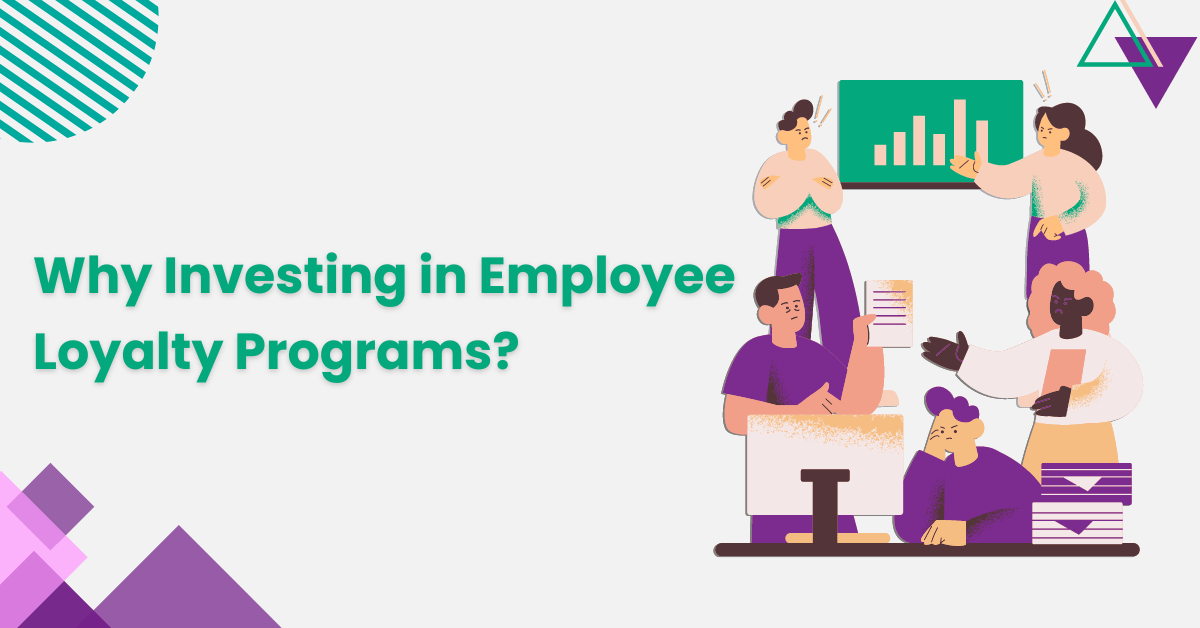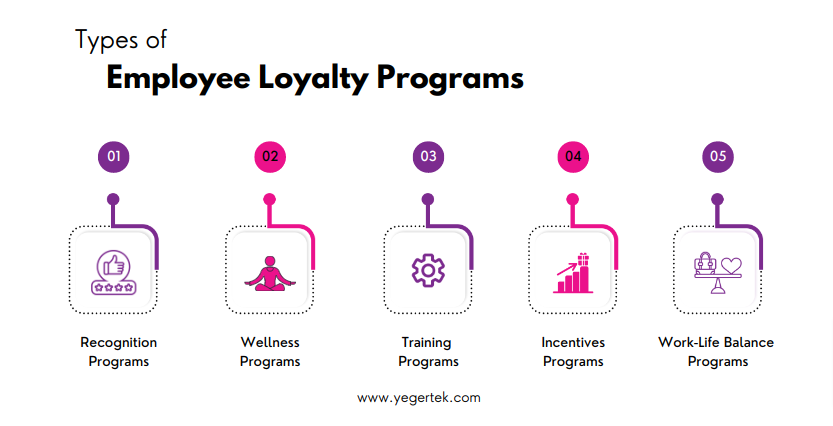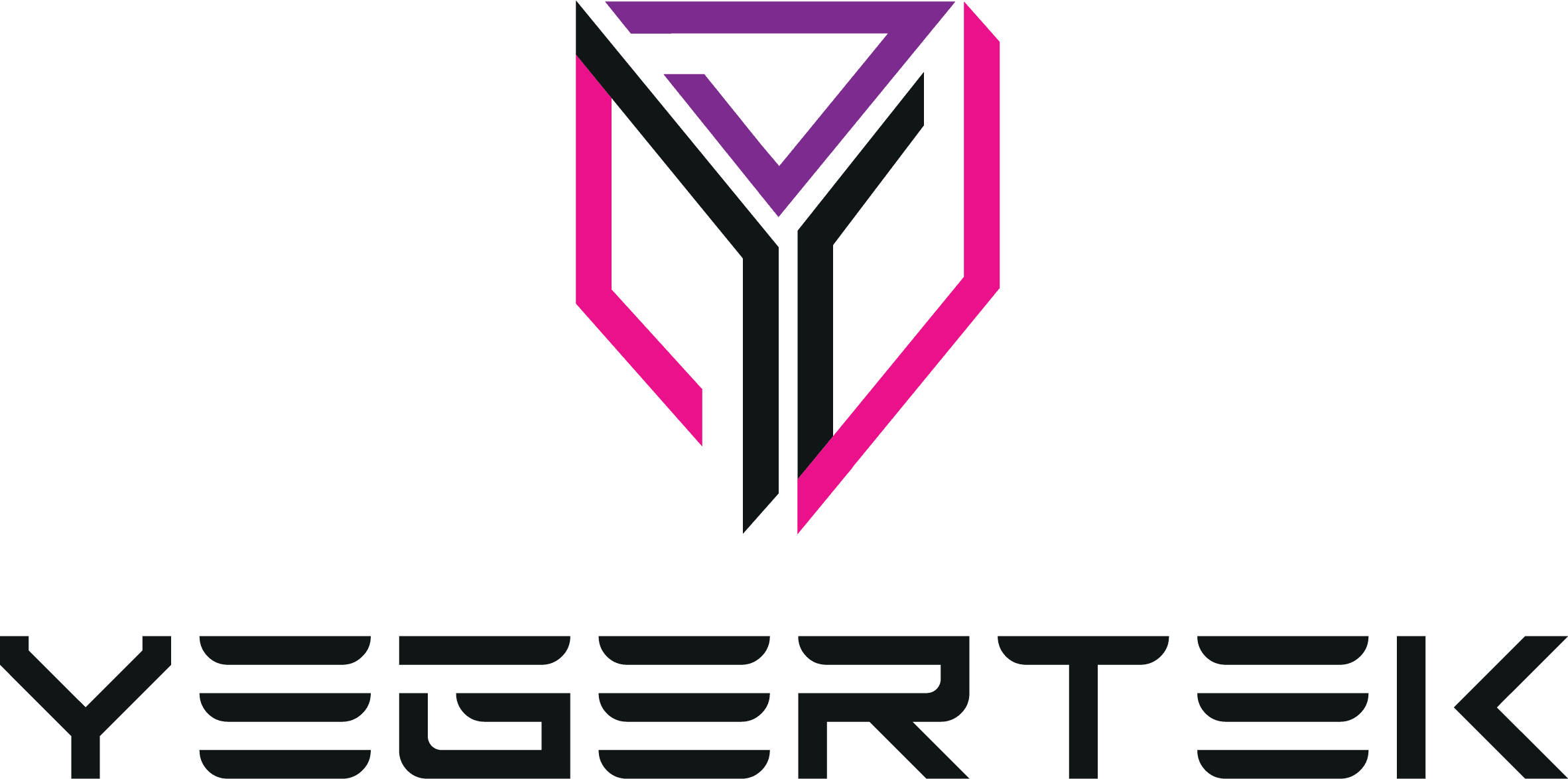
Why Investing in Employee Loyalty Programs?
Definition and Importance of Employee Loyalty Programs in Today’s Business Landscape
Employee Loyalty Programs to reward and reimburse employees for their commitment and loyalty to the company are meant to motivate them to work for a long time. These programmes are becoming increasingly well-liked in the professional world because of the multiple perks they offer either employers & staff.
Employee reward programs provide a range of advantages to staff members, such as bonuses, promotions, flexible work schedules, more holiday time, and chances for professional growth. These incentives promote a feeling of dedication and devotion to the company, which can boost job satisfaction and a sense of belonging among employees.
Subsequently, the importance of employee loyalty programmes in today’s business environment cannot be emphasized. These strategies can help corporations in attracting and retaining top talent, boosting productivity and quality of work, and create employee loyalty and perseverance. Launching an effective employee membership program should be a top priority for any company looking to succeed in today’s competitive business market.
Benefits of Employee Loyalty & Recognition Programs
Employee loyalty programs are a powerful tool that can help organizations to attract and retain top talent, improve productivity and efficiency, and create a positive company culture. A loyalty program can benefit both employees and organizations, as we explore in this blog post.
1. Improved Employee Retention
Improved employee retention is one of the most huge advantages of an employee loyalty program. High employee turnover rates can be costly and time-consuming for an organization. Organizations can reduce turnover rates and retain their top-performing employees by offering rewards and incentives for loyalty and commitment.
2. Increased Employee Engagement and Motivation
Employee recognition programs can also increase employee engagement and motivation. Employees are much more inclined to perform effectively and help contribute to the organization’s success when they really feel appreciate & valued. Increased motivation can result in strengthened output and productivity, as well as gradually improved confidence and work engagement.
3. Higher Productivity and Efficiency
Employee recognition has direct impact on productivity and efficiency. Employees who feel valued and motivated are more likely to be focused & committed to their work. This can lead to higher quality work, faster completion times, and better productivity.
4. Positive Impact on Company Culture
Employee loyalty programs can also have a positive impact on company culture. Employees who feel valued and appreciated are likelier to have a positive attitude toward the organization and their work. This positive attitude can be contagious, leading to a more positive and supportive company culture.
5. Enhanced Customer Experience through Better Employee-Customer Interactions
Finally, employee rewards program can also lead to an enhanced customer experience. Employees that are interested, driven, or motivated in their profession are more likely to give excellent customer service and interact positively with clients. This can lead to help client satisfaction and loyalty, in addition to higher revenues for the firm.
Read more: How to Design a Loyalty Program That Drives Customer Engagement and Loyalty
Types of Employee Loyalty Programs
Employee loyalty programs are a crucial aspect of any successful organization’s strategy. These programs can help employers attract, retain, and motivate top talent while improving productivity and overall job satisfaction. Our discussion of employee loyalty programs will include examples of how they can benefit both employees and organizations.

1. Recognition Programs
Recognition programs are one of the most popular types of employee loyalty programs. These programs are designed to acknowledge and celebrate employees’ achievements & contributions to the organization. Recognition programs can take many forms, such as employee of the month awards, peer recognition programs, or public recognition events. Organizations can increase employee engagement, job satisfaction, and overall motivation by recognizing employees’ hard work & dedication.
2. Wellness Programs
Another type of employee loyalty program is a wellness program. The purpose of these programs is to promote the physical and mental well-being of employees. Wellness programs can include activities such as yoga classes, meditation sessions, health screenings, or access to gym memberships. By investing in their employees’ wellness, organizations can create a more positive and productive work environment while reducing healthcare costs and absenteeism rates.
3. Training and Development Programs
Training and development programs are another essential type of the employee loyalty program. Such programmes are intended to give employees with opportunities for professional growth and development. Training and development programs can include workshops, seminars, mentorship programs, or tuition reimbursement for continuing education. Organizations can boost employee engagement, job happiness, and overall productivity by investing in their employee’s professional development.
4. Rewards and Incentives Programs
Rewards and incentives programs are another popular type of the employee loyalty program. These programs are designed to reward employees for achieving specific goals or milestones. Rewards and incentives programs can include bonuses, promotions, gift cards, or tangible rewards. Organizations can increase employee motivation and job satisfaction by incentivizing employees to achieve specific goals.
5. Work-Life Balance Programs
Finally, work-life balance programs are another essential type of employee loyalty program. These strategies are intended to assist employees in achieving a healthy work-life balance by offering flexible working solutions such as remote work, flexible hours, or additional paid time off. Work-life balance can benefit firms in a variety of ways, including enhance employee happiness, reduce stress, burnout, and improve overall job performance.
So investing in their employees through loyalty programs, organizations can create a more positive successful work environment while improving employee engagement, job satisfaction, and overall productivity.
Best Practices for Implementing Employee Rewards and Recognition Programs
Employee rewards programs can be valuable for organizations to improve employee engagement, retention, and overall job satisfaction. However, implementing a successful employee loyalty program requires careful planning and execution.
1. Clear Goals and Objectives
Establishing clear goals and objectives is one of the most critical factors in implementing a successful employee loyalty program. An effective program must identify its specific goals and objectives before implementation. These goals should align with the organization’s overall strategy and be measurable to track the program’s success.
2. Employee Involvement and Feedback
Employee involvement and feedback are crucial to the success of any employee loyalty program. Professionals should be involve in the program’s design and implementation to ensure that it satisfies their needs and goals. Furthermore, organizations should regularly solicit employee feedback to evaluate the program’s effectiveness and identify areas for improvement.
3. Customization to Fit the Needs of the Organization and Employees
Every organization and employee is unique, so employee loyalty programs should be customise to fit their specific needs. Organizations should consider factors such as their culture, industry, and employee demographics when designing and implementing loyalty programs. Customization ensures the program is relevant and effective for the organization and its employees.
4. Consistent Communication and Follow-up
Clear and consistent communication is vital to the success of any employee loyalty program. Organizations should clearly and frequently communicate the program’s goals, objectives, and benefits to employees clearly and frequently. Furthermore, employers should provide regular program updates and follow up with employees to ensure they are engaging with the initiative.
5. Measurement and Evaluation of the Program’s Success
Measurement and evaluation of the program’s success are essential to ensure it achieves its intended goals and objectives. Organizations should establish key performance indicators (KPIs) and regularly measure the program’s effectiveness against those KPIs. Evaluation allows organizations to identify areas for improvement and make necessary adjustments to the program.
Employee loyalty schemes, when achieve correctly, can improve employee engagement, retention, and overall job satisfaction, resulting in a more happy and more productive work environment.
The Impact of Rewards and Recognition Programs on Employee Loyalty
However, implementing a successful employee loyalty program requires careful planning and execution. We’ll discuss the best ways to implement rewards and recognition programs and ensure they make the grade.
Positive Correlation Between Employee Satisfaction and Customer Satisfaction
There is a positive correlation between employee satisfaction and customer satisfaction. Employees that are happy and passionate about their job are more likely to deliver better customer service, which ultimately results in better customer satisfaction. Furthermore, satisfied employees are more likely to go above and beyond for their customers, increasing customer loyalty and retention.
1. Improved Customer Experience Through Better Employee Interactions
Employee loyalty programs can also improve customer experiences through better employee interactions. Employees that are happy and engage with their duties are more likely to give excellent client service, leading to a better overall customer experience. These positive experiences can lead to improve customer loyalty and retention.
2. Increased Customer Loyalty and Retention
Employee rewards programs can also lead to enrich customer loyalty and retention. Employees who are pleased and motivated can deliver excellent customer service, which leads to loyal consumers.
A happy employee causes a ripple effect that spreads across the organization and eventually reaches the customers. Additionally, employee loyalty programmes can inspire professionals to go the extra mile for their clients, resulting in boost customer loyalty and retention.
3. Higher Revenue and Profits Due to Repeat Business and Positive Word-of-Mouth
The benefits of employee rewards and recognition programs are not limit to employee loyalty and retention. These programs can also lead to higher revenue and profits for businesses. Customers that are loyal and satisfied are more likely to return, leading to repeat business and escalate revenue. Also, satisfied buyers are more likely to advise the business to their close friends and family, leading to positive publicity and higher earnings.
Conclusion
Invest in your employees with rewards and recognition programs to build a loyal customer base. Prioritize employee satisfaction to enhance engagement and productivity for a better customer experience. Increased customer loyalty leads to higher revenue and profits. It’s still possible to start. Visit our website for more information and support.



